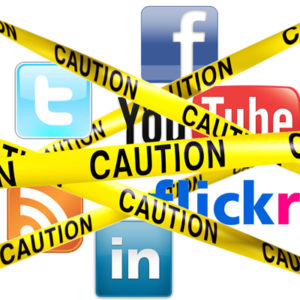Social Media Hacking
Social media has become a gold mine for hackers. It’s just so easy! Individual social media platforms have been hackable since their introduction. Social media users don’t understand their vulnerability or even recognize how they are opening themselves up.
Social media to most means they have a platform to showcase their most significant accomplishments, catch up with friends, and promote their businesses, etc. They underestimate all the information they are putting out on the world wide web.
Did you know that for example, if you download a free game, the game will ask you to connect with friends? The game then asks you to turn over your Facebook friends. Do that, and you’ve established turned over a wealth of information for them to use.

When a hacker gets a foot in your digital door, it is just a matter of time before they gain access to your physical world. They inherit all your access to all your contacts. If you use social media to comment on retailers, restaurants or services, the hacker gets access to your browsing and shopping history, and anything else you are viewing.
Have you ever stopped to think that some of those chain emails we inbox each other may very well contain a virus and we just sent it to 15people in 30 seconds because that’s what you were instructed to do?
Several things to watch out for:
- Be careful when using social media while on public Wi-Fi hotspots. Hotspots allow for your information to be accessed by anyone utilizing that hub.
- We love to beef up our social media profiles and show all our accomplishments, but this provides entirely too much personal information. Profile information creates a goldmine of info for hackers, the kind of data that helps them personalize phishing scams.
- Everything you place in your profile – even if you have your information set to private once a hacker gains entry they will see all that. Hackers may even be able to imitate you online.
Social engineering is a trick that merely asks for passwords. Have you ever went to a site and all of a sudden it says it does not recognize your login information and asks you to re-enter it. Be careful this site may have been hacked and a duplicate site set up to capture your information.
Keyloggers are programs that can be leached into your system to report every move you make on your computer, a massive database the application can then mine for passwords, contacts and personal information.
Shadowing, side-jacking, and Firesheep make libraries, coffee shops and public parks easy places to steal your info. Dedicated hackers use technology to follow users and their use.
There are technologies that have access to every keystroke, and other programs can figure out your habits and web history. They can run analytics that describes and predict behavior.
If you are interested in finding out more about malware terminology you can go here.
How to tell if your Facebook has been hacked (and what to do)
Here’s a simple way to see if there is someone messing with your Facebook account.
BY ALINA BRADFORD
Some other ways to tell if your account has been hacked are:
- Your name, birthday, email or password has been changed
- Someone sent out friend requests to people you don’t know
- Messages have been sent from your account, but you didn’t write them
- Posts are appearing on your timeline that you didn’t post
An extra layer of security that is known as “multi-factor authentication”
In today’s world of increasing digital crime and internet fraud many people will be highly familiar with the importance of online security, logins, usernames, and passwords but if you ask them the question “What is Two Factor Authentication?” the likelihood is they will not know what it is or how it works, even though they may use it every single day.
With standard security procedures (especially online) only requiring a simple username and password it has become increasingly easy for criminals (either in organised gangs or working alone) to gain access to a user’s private data such as personal and financial details and then use that information to commit fraudulent acts, generally of a financial nature.
How does it work?
Two Factor Authentication, also known as 2FA, two-step verification or TFA (as an acronym), is an extra layer of security that is known as “multi-factor authentication” that requires not only a password and username but also something that only, and only, that user has on them, i.e., a piece of information only they should know or have immediately to hand – such as a physical token.
The best thing to do is continually monitor your account. Look for the little changes and when you notice something change your password again.